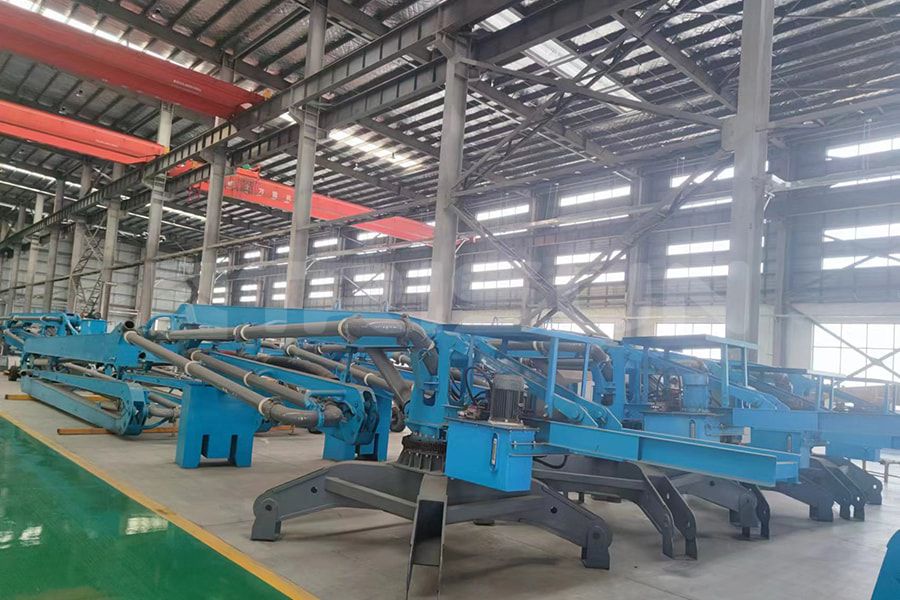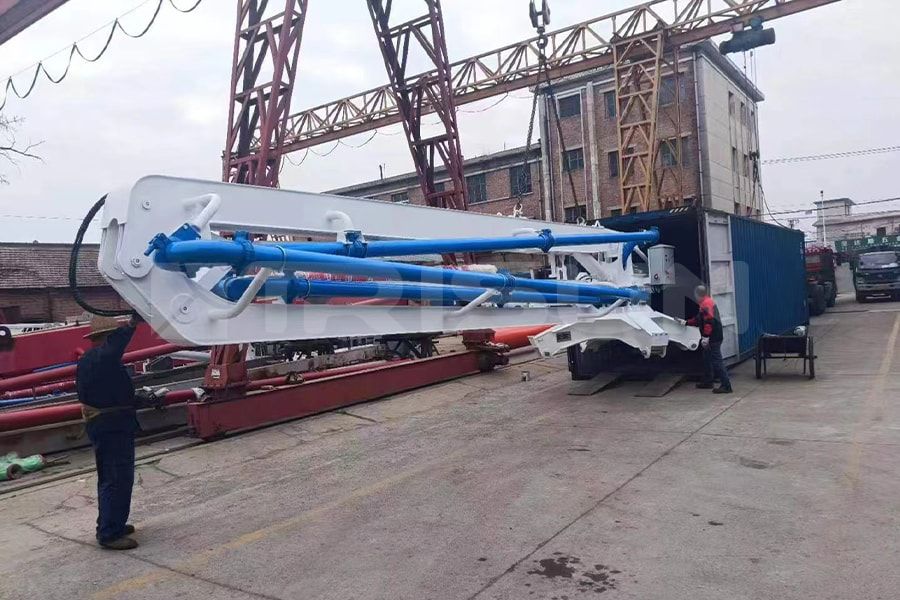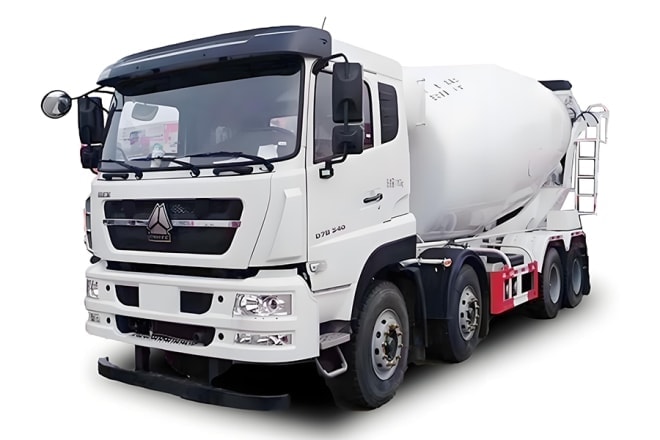
- Features & Properties
- Technical Specification
- Gallery
- Related Products
1. It is reasonably designed and adopts a 360° full-rotation boom structure, which is stable and reliable.
2. It is light in weight, can be hoisted and moved as a whole, and can also be quickly disassembled so it can be quickly moved to other construction sites;
3. It does not need to be fixed when used, and the placement is flexible. It can be placed on the floor, shelf, etc.;
4. It is easy to operate, flexible in rotation, and has the characteristics of high efficiency, energy saving, economy and practicality, which plays an important role in improving construction efficiency and reducing labor intensity.
| Model | HGY11 | HGY13 | HGY15 | HGY17 | HGY19 | HGY21 |
| Placing radius | 11m | 13m | 15m | 17m | 19m | 21m |
| Flexible tube length | 3m | 3m | 3m | 3m | 3m | 3m |
| Tube inner diameter | 125mm | 125mm | 125mm | 125mm | 125mm | 125mm |
| Rotation angle | 360° | 360° | 360° | 360° | 360° | 360° |
| Hydraulic system power | 4kW | 4kW | 4kW | 5.5kW | 5.5kW | 5.5kW |
| Working pressure | 20Mpa | 20Mpa | 20Mpa | 20Mpa | 20Mpa | 22Mpa |
| Weight | 7.5t | 2.7t | 3.2t | 5.0t | 5.5t | 5.2t |
| Counterweight | 2.2t | 1.8t | 2.2t | 2.6t | No | 3.2t |
Note: All features, functionality and other product specifications are subject to change without notice or obligation.








FAQ
Q: Comparison of hydraulic concrete placing boom with manual concrete placing boom and manual concrete pouring.
| Hydraulic placing boom | Manual placing boom | Manual pouring (without placing boom) | |
| Placing radius | 11-33m | 10-15m | - |
| Work scope | Foldable, no dead ends, can work both horizontally and vertically | Horizontal boom, fixed height, significantly affected by columns and steel bars | Pipes need to be disassembled and reconnected at each pouring point |
| Operators | 2 operators | 4 operators | 4 operators |
| Efficiency | One-time pouring of large area, high efficiency | Need to be moved by frequency, normal efficiency | Pipes need to be frequently disassembled and reconnected, low efficiency |
| Tower crane | Occasionally needed | Frequently needed | Occupied for a long time |
| Safety | Remote control, safe construction | Pulling with a rope, potential safety hazard | Easy to bump and damage the formwork |
| Service life | More than 10 years | One-off, one site only | - |
Q: What are the advantages of hydraulic concrete placing boom?
A: 1) It is safe and efficient and improves economic benefits. Because of its large placing range and flexible and convenient operation, it does not require workers to constantly transport concrete or frequently dismantle and connect pipes like other pouring methods. Therefore, it reduces labor intensity and safety risks. At the same time, it greatly speeds up the process of concrete pouring, shortens the construction period and improves economic benefits.
2) It improves the quality of concrete construction. During the large-area concrete pouring process, it often takes a certain amount of time to pass through the hopper and frequently dismantle and connect pipes, which makes the concrete easy to lose water and affects the quality. However, the hydraulic placing boom can pour continuously, making the concrete easier to vibrate, with higher density, more uniform solidification shrinkage, and elimination of shrinkage cavities, cracks, segregation and other defects that affect the construction progress and construction quality.
3) It avoids hidden damage to the building structure. During the traditional pouring of concrete, due to the high pressure of the stationary concrete pump, the pipes vibrate on the surface of the platform. This vibration can easily leave hidden damage to the structure that is difficult to heal after the initial setting and before the final setting of the concrete. When using a concrete placing boom, it does not come into contact with the formwork, so it does not vibrate the formwork, which avoids damage to the building structure.
4) Wall pouring and platform formwork do not affect each other. When the grade requirements of wall and floor concrete are inconsistent, walls and columns are required to be poured first. At this time, because the platform formwork has not been erected, it is very difficult and unsafe to manually remove the pipes. However, if the pipes are connected after the platform formwork is set up, it will affect the construction period and is not conducive to the reasonable arrangement of the labor force. If a hydraulic concrete placing boom is used, the wall pouring and platform formwork do not interfere with each other, and the efficiency is particularly obvious.
Q: What are the precautions when using the hydraulic concrete placing boom?
A: 1) It is limited to transporting concrete (generally speaking, the density is about 2.2t/m³).
2) Φ125mm is the maximum diameter of concrete pipe, and larger diameters are not allowed.
3) The length of the hose at the end of the hydraulic placing boom shall not exceed 3m.
4) The hydraulic concrete placing boom must not be used as a crane to lift or drag items.
5) The allowable wind speed under working conditions shall not exceed 56Km/h. Under non-working conditions, the allowable wind speed shall not exceed 72Km/h.
6) After the work is completed and cleaning is completed, the placing boom should be folded and retracted with safety hook and turned in the direction of the wind.
7) In case of thunder and lightning, work should be stopped immediately.






